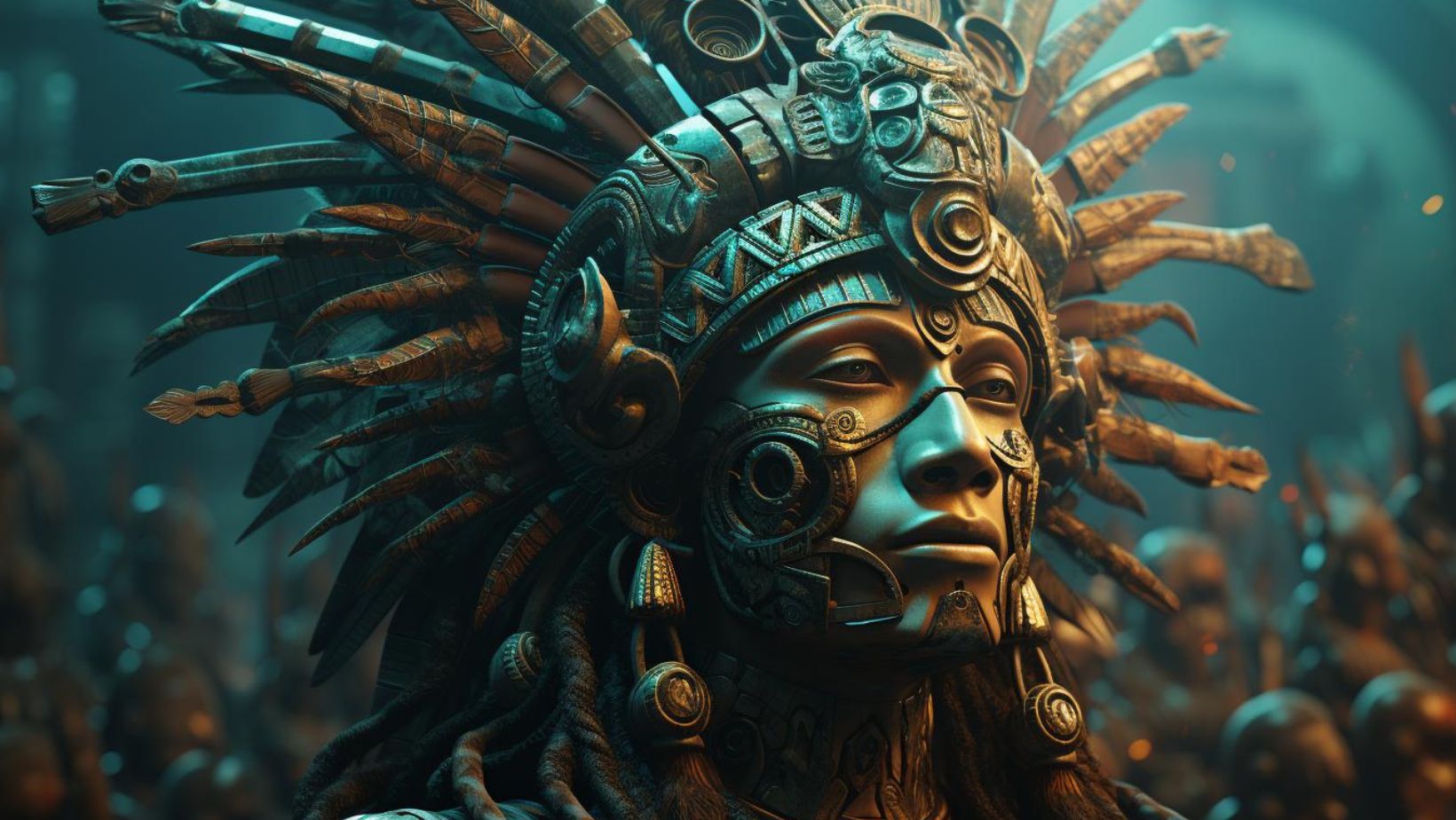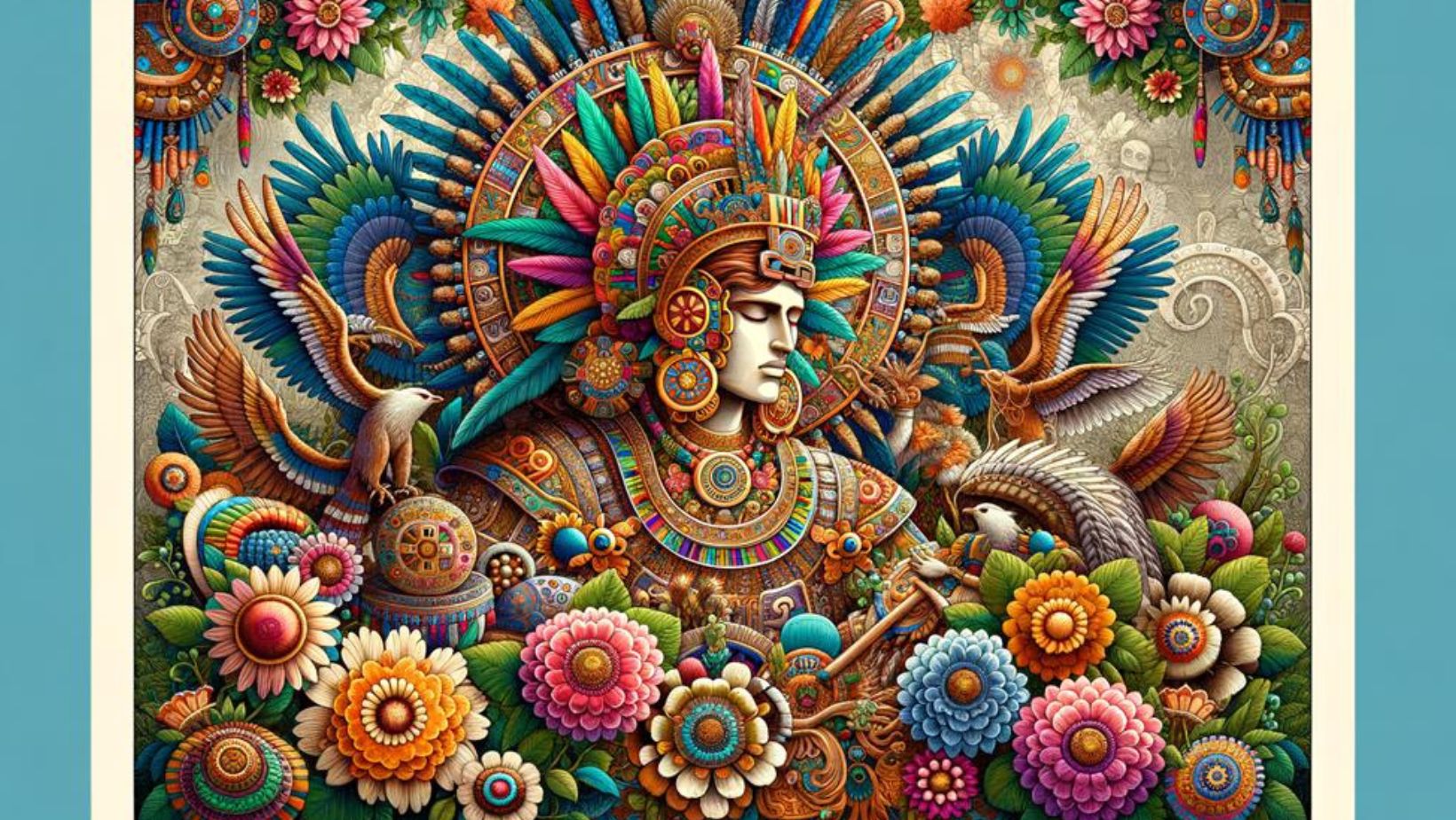Meet Xochipilli, the vibrant Aztec god of art, ecstasy, and ritual. Xochipilli embodies the joy and creativity that flourished in Aztec society. He is not just a deity; he represents the heart of artistic expression, from painting to music and dance. In a culture that celebrated life through rituals, he played a vital role in connecting the divine with the everyday. Xochipilli influence resonates in ceremonies that evoke ecstasy, transforming ordinary moments into extraordinary experiences. Join us as we explore his fascinating world, where art and spirituality intertwine in beautiful harmony.
The Mythological Origins

His origins are steeped in rich Aztec mythology. He is often regarded as the son of the creator god Tezcatlipoca and the goddess of fertility, Coatlicue. In some legends, he is born from the earth itself, emerging from the vibrant flowers that represent life and creativity. This birth symbolizes his connection to art and beauty, grounding him in the natural world.
He is closely linked to other important deities in the Aztec pantheon. His siblings include the gods of war, Huitzilopochtli, and the moon, Coyolxauhqui. Together, they form a balance between conflict and creativity, reflecting the complexities of life. He often collaborates with other gods, like Tlazolteotl, the goddess of purification, to promote rituals that celebrate art and joy.
These myths reveal the dual nature of his both a creator and a destroyer. He embodies the cycle of life, representing the joy found in creativity and the ecstasy of spiritual experiences. His origins highlight the importance of art and ritual in connecting with the divine, solidifying his place in Aztec mythology.
Symbols and Attributes
He is rich in symbols that reflect his divine nature. Flowers are perhaps the most prominent symbols associated with him. They represent beauty, creativity, and the fleeting nature of life. In Aztec culture, flowers were used in various rituals, emphasizing his connection to artistic expression.
Music is another vital attribute of him. He is often depicted with musical instruments, such as drums and flutes. Music in Aztec society was a powerful form of communication with the gods. It enhanced rituals and celebrations, inviting the divine presence into the earthly realm.
Dance also plays a crucial role in his iconography. He is often shown in dance poses, reflecting movement and joy. Dance was integral to Aztec ceremonies, serving as a way to honor the gods and express communal harmony. Through these symbols—flowers, music, and dance—he embodies the vibrant spirit of creativity and ecstasy that permeates Aztec culture. They illustrate how art and spirituality intertwined in daily life, allowing people to connect with the divine.
Xochipilli as the God of Art
He is revered as the god of art in Aztec mythology. His influence extends across various artistic forms, including painting, sculpture, and poetry. Artists sought his blessing to ensure their works would resonate with beauty and creativity. In this way, he served as a divine patron, inspiring countless creations that reflected the vibrant culture of the Aztecs.
Artistic expressions inspired by him were prevalent in ancient Aztec society. Temples and public spaces often featured murals depicting his image and the vibrant scenes of life. Craftspeople created intricate pottery and textiles adorned with motifs that symbolized his essence. Poetry recited during rituals celebrated his contributions to creativity, highlighting the importance of art in spiritual practices.
Festivals dedicated to him included music, dance, and visual arts, showcasing the wealth of talent within the community. These events reinforced the connection between the divine and artistic endeavors, allowing people to express their devotion through creativity. In essence, his role as the god of art enriched the cultural landscape of the Aztecs, illustrating how art served as a bridge to the divine.
The Connection Between Xochipilli and Ecstasy

He is deeply connected to the concept of ecstasy in Aztec rituals. In Aztec culture, ecstasy referred to an altered state of consciousness that allowed individuals to connect with the divine. This experience was often achieved through music, dance, and the use of hallucinogenic substances, which were believed to open pathways to the spiritual realm. He embodied this ecstatic experience, representing the joy and liberation found in artistic expression.
During rituals honoring him, practitioners sought to achieve a state of ecstasy. They participated in lively dances and performed music, creating an atmosphere that encouraged spiritual connection. These rituals often included offerings, such as flowers and food, to invoke his presence and blessings. The aim was to transcend ordinary reality and experience divine joy.
He influence enhanced the spiritual experiences of practitioners, guiding them toward enlightenment. Participants often reported feelings of unity with the universe and heightened creativity. Through these ecstatic states, they could tap into deeper insights and understanding, fostering a greater connection to the divine. Thus, he served as a powerful symbol of the transformative power of art and spirituality in Aztec culture.
Ritual Practices Dedicated
Ritual practices dedicated to him were vibrant and multifaceted, reflecting his role as the god of art and ecstasy. One of the most significant ceremonies was the Xochitl Festival, celebrating the blooming of flowers. During this event, priests and practitioners gathered to honor him with music, dance, and elaborate offerings. These rituals aimed to invoke his presence and ensure a bountiful harvest and artistic inspiration.
Music played a central role in these ceremonies. Participants used various instruments, including drums, flutes, and rattles, to create rhythmic sounds that filled the air. This music not only honored him but also helped participants enter states of ecstasy. The melodies inspired joy and connected the community to the divine.
Dance was equally important in the rituals. Dancers adorned themselves with colorful costumes and flower crowns, embodying the spirit of him. Their movements expressed gratitude and reverence, fostering a communal bond. Offerings of flowers, food, and crafted items were also presented to honor the deity. These acts of devotion highlighted the deep connection between art, spirituality, and nature in Aztec culture, solidifying his significance in their rituals.
Xochipilli in Aztec Society
Xochipilli, the Aztec god of beauty, art, and flowers, held significant importance in Aztec society. He represented the joys of life, love, and creativity, influencing various aspects of daily living. The Aztecs revered him as a patron of music and dance, and his presence was felt during various social activities.
He played a central role in festivals and cultural celebrations. The annual festival honoring him, known as the “Festival of Flowers,” was a vibrant event filled with music, dance, and offerings. Participants adorned themselves with flowers and presented them to the deity, showcasing their appreciation for beauty and creativity.
In addition to festivities, he was linked to agricultural practices. The Aztecs believed that he influenced the growth of flowers and crops, which were vital for sustenance. His connection to fertility and abundance made him an essential figure in ensuring a successful harvest.
Overall, he was a key figure in Aztec culture. His influence extended beyond religious practices, impacting daily life through art, celebrations, and agriculture. The legacy of him continues to be recognized today, reflecting the enduring significance of beauty and creativity in human experience.
Aztec Art and Architecture

He is prominently featured in Aztec art, showcasing his significance in the culture. Artists depicted him in various media, including stone carvings, pottery, and murals. His representations often include symbols of beauty and nature, such as flowers, butterflies, and musical instruments. These artistic works reflect the Aztec reverence for creativity and the beauty of the natural world.
Notable temples and structures were dedicated to him throughout the Aztec Empire. One prominent site is the Templo Mayor in Tenochtitlan, where he was honored alongside other deities. The temple’s elaborate carvings and murals depicted his attributes, emphasizing his importance in Aztec spirituality. Another significant location is the shrine at the city of Xochimilco, known for its association with flower cultivation and beauty.
In addition to temples, He influenced the design of public spaces and gardens. These areas often featured vibrant flowers and plants to honor the god of beauty. His presence in art and architecture highlights the integral role of him in Aztec society and their appreciation for the aesthetics of life.
Modern Interpretations

Contemporary artists and scholars view him as a symbol of creativity and the connection between humanity and nature. He is often interpreted as a deity representing the importance of art, music, and beauty in life. Many modern artists incorporate him into their work to explore themes of cultural identity and spirituality. This approach brings new life to ancient Aztec mythology, highlighting its relevance today.
There is a growing revival of interest in Aztec mythology in modern culture. Books, films, and art exhibitions frequently feature Xochipilli and other deities, making their stories accessible to a broader audience. Scholars are also examining the significance of these myths in contemporary society. They explore how ancient beliefs can inform discussions about environmental sustainability and artistic expression.
Additionally, Xochipilli has become a symbol in various cultural movements advocating for indigenous rights and cultural preservation. Artists use his image to celebrate heritage and challenge historical narratives. This modern interpretation showcases Xochipilli not just as a mythological figure but as a vital part of the ongoing dialogue about culture and identity.
Conclusion: Xochipilli
Xochipilli holds a significant place in Mesoamerican history as a representation of creativity, beauty, and the sacredness of nature. His influence extends beyond ancient rituals, resonating in modern artistic and spiritual practices. Today, Xochipilli inspires artists and cultural advocates who seek to revive and celebrate indigenous heritage. This enduring legacy underscores the timeless relevance of Aztec mythology in contemporary society, reminding us of the deep connections between art, nature, and the human experience. Through ongoing reinterpretations, Xochipilli continues to enrich our understanding of cultural identity and creativity.
FAQs
Who is Xochipilli in Aztec mythology?
Xochipilli is the Aztec god of art, beauty, dance, and flowers. He embodies creativity and is often associated with music and the pleasures of life. His name translates to “Flower Prince,” symbolizing his deep connection to nature and the flourishing of life.
What symbols are associated with Xochipilli?
Common symbols linked to Xochipilli include flowers, butterflies, and musical instruments like the drum and flute. These symbols represent beauty, transformation, and artistic expression. Additionally, he is often depicted adorned with floral motifs and vibrant colors.
What festivals are dedicated to Xochipilli?
The Aztecs celebrated various festivals honoring Xochipilli, including the “Tlacaxipehualiztli” festival, which involved music, dance, and offerings of flowers and food. These celebrations emphasized the importance of nature and creativity in Aztec society, often involving rituals to ensure bountiful harvests and artistic inspiration.
How does Xochipilli influence modern culture?
Xochipilli continues to inspire contemporary artists, musicians, and writers, who draw upon Aztec themes in their work. His symbolism resonates with movements focused on environmentalism and cultural revival. Additionally, his imagery is often featured in modern interpretations of Mesoamerican mythology.
What is Xochipilli’s connection to the other Aztec deities?
Xochipilli is part of a larger pantheon of Aztec gods and is often linked to deities representing agriculture and fertility, such as Centeotl and Tlaloc. His role emphasizes the interconnectedness of nature, art, and human experience, reflecting the holistic worldview of the Aztec civilization.

